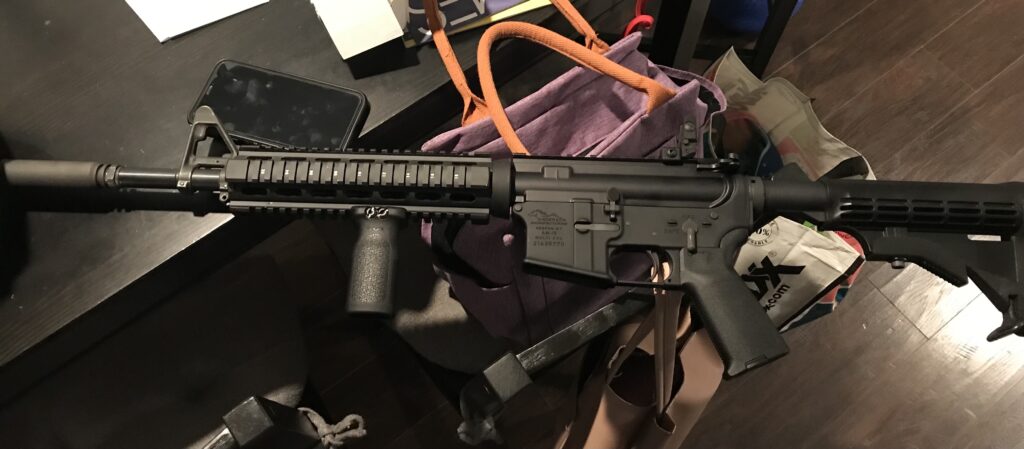The AR-15 platform is beloved for its modularity, and one of the most significant ways shooters customize their rifles is through the AR-15 rail system. This component is more than just a place to grip your firearm—it’s the foundation for mounting optics, lights, foregrips, bipods, and a whole range of tactical accessories.
But with so many rail systems available—KeyMod, M-LOK, Picatinny, and even hybrid configurations—how do you know which one is best suited for your needs? In this blog, we’ll break down the pros and cons of the most popular AR-15 rail systems and help you choose the perfect setup for your mission, environment, or shooting style.
Understanding the Function of an AR-15 Rail
At its core, an AR-15 rail system serves three main purposes:
- Mounting Accessories – From red dot sights and lasers to vertical grips and sling mounts, the rail gives you the versatility to fully equip your rifle.
- Heat Management – It acts as a barrier between your hand and the hot barrel, especially during extended shooting sessions.
- Ergonomics – A well-designed rail improves how you handle and control your rifle, especially in dynamic shooting scenarios.
Rail systems are generally mounted to the handguard, which surrounds the barrel. They come inmany lengths and configurations, ranging from basic carbine-length setups to free-floating rifle-length models that improve accuracy.
The Big Three: Picatinny, KeyMod, and M-LOK
1. Picatinny Rail (MIL-STD-1913)
Overview:
The Picatinny rail is the OG of rail systems. Originally developed for military use, it features a series of raised ridges with consistent spacing.
Pros:
- Extremely robust and widely supported.
- Nearly every accessory has a Picatinny-compatible option.
- Great for mounting optics and lasers that require a very secure fit.
Cons:
- Heavier and bulkier than other rail types.
- Limited by fixed slots—placement can be restricted.
- Can be uncomfortable to grip without rail covers.
Best For:
Shooters who prioritize durability, use heavy-duty accessories, or operate in harsh environments.
2. KeyMod Rail
Overview:
Developed as a lightweight alternative to Picatinny, KeyMod uses a distinctive keyhole-shaped slot system for mounting accessories.
Pros:
- Significantly lighter than a full Picatinny setup.
- Smooth surface makes for a more comfortable grip.
- Sleek, minimalist appearance.
Cons:
- Requires KeyMod-specific accessories or adapter rails.
- Not as robust in impact situations compared to Picatinny or M-LOK.
- Some accessories may loosen over time if not torqued properly.
Best For:
Weight-conscious builds, competition rifles, or those seeking a clean, snag-free profile.
3. M-LOK Rail
Overview:
Designed by Magpul, M-LOK has quickly become the industry standard for modular rails, thanks to its ease of use and rugged performance.
Pros:
- Stronger and more secure than KeyMod.
- Allows direct attachment of M-LOK accessories (or Picatinny sections).
- Lightweight and customizable with fewer limitations on accessory placement.
Cons:
- Requires M-LOK compatible gear or adapters.
- Slightly more complex to install than KeyMod accessories.
Best For:
Modern tactical setups, high-performance builds, or anyone wanting a reliable and flexible AR-15 rail.
Free-Float vs Drop-In Rail Systems
Drop-In Rail
Features:
- Two-piece design that “drops in” around the barrel between the delta ring and front sight post.
- No need for special tools or modifications.
Pros:
- Budget-friendly.
- Easy to install—ideal for beginners.
- Works with standard A2 front sights.
Cons:
- Not as stable as a free-float rail.
- Can slightly affect accuracy since it touches the barrel.
Ideal User:
Recreational shooters and first-time AR-15 owners who want a basic rail upgrade.
Free-Float Rail
Features:
- Attaches only to the upper receiver, not the barrel.
- “Floats” around the barrel, not touching it directly.
Pros:
- Improved accuracy, especially for long-range shooting.
- More space for accessories.
- Greater rigidity and better heat dissipation.
Cons:
- Requires armorer’s tools and basic gunsmithing skills for installation.
- More expensive.
Ideal User:
Precision shooters, competitive marksmen, or those wanting to build a custom, high-performance AR-15.
Factors to Consider When Choosing an AR-15 Rail
When evaluating your options, consider the following:
1. Purpose and Use Case
Are you using your rifle for home defense, competitive shooting, hunting, or tactical applications? A home defense rifle might benefit from a compact M-LOK system with room for a light and laser. A competition gun might prioritize weight savings and use a minimalist KeyMod setup.
2. Weight
Weight adds up, especially with accessories. A lightweight AR-15 rail system is essential if you’re carrying your rifle for long periods or plan to shoot fast-paced stages.
3. Ergonomics
Your rail should feel comfortable in your hands, allow for solid grips, and fit your shooting style. Rounded or smooth handguards are often better for offhand shooting or CQB.
4. Material and Durability
Most rails are made from aluminum, but quality varies. Look for aircraft-grade 6061 or 7075-T6 aluminum. Also, consider whether it’s hard-anodized for corrosion resistance.
5. Length
Longer rails (mid-length to rifle-length) provide more room for accessories and better control, but can add weight. Shorter rails are more maneuverable.
Top Accessory Considerations for Your Rail System
Choosing the right AR-15 rail is only the beginning—you’ll also want to think ahead about the accessories you plan to use. Here are a few essentials:
- Optics and Sights – Whether you’re mounting a red dot, LPVO, or backup iron sights, a Picatinny section is usually necessary.
- Weapon Lights – Especially for home defense or low-light shooting. M-LOK and KeyMod offer flexible mounting angles.
- Vertical Grips or Hand Stops – Useful for added control and faster target acquisition.
- Sling Mounts – For tactical or field use, QD sling swivels or mounts are often added to the rail.
- Bipods – Precision shooters may want an M-LOK-mounted bipod or a Picatinny adapter.
Make sure your chosen rail supports the necessary accessories, either directly or with adapters.
Choosing Your Ideal AR-15 Rail
In the end, the best AR-15 rail system is the one that aligns with your goals and enhances your shooting experience. Whether you prefer the battle-tested reliability of a Picatinny, the featherweight feel of a KeyMod, or the modern versatility of M-LOK, there’s a perfect setup waiting for you.
As AR-15 customization continues to evolve, it’s essential to stay informed and choose components that match your performance needs and tactical priorities. Your rail system is not just an add-on—it’s the skeleton that holds your rifle’s enhancements together.
Before you make your next upgrade, think carefully about how you use your rifle, what accessories you need, and how your rail system can help elevate your shooting game.






